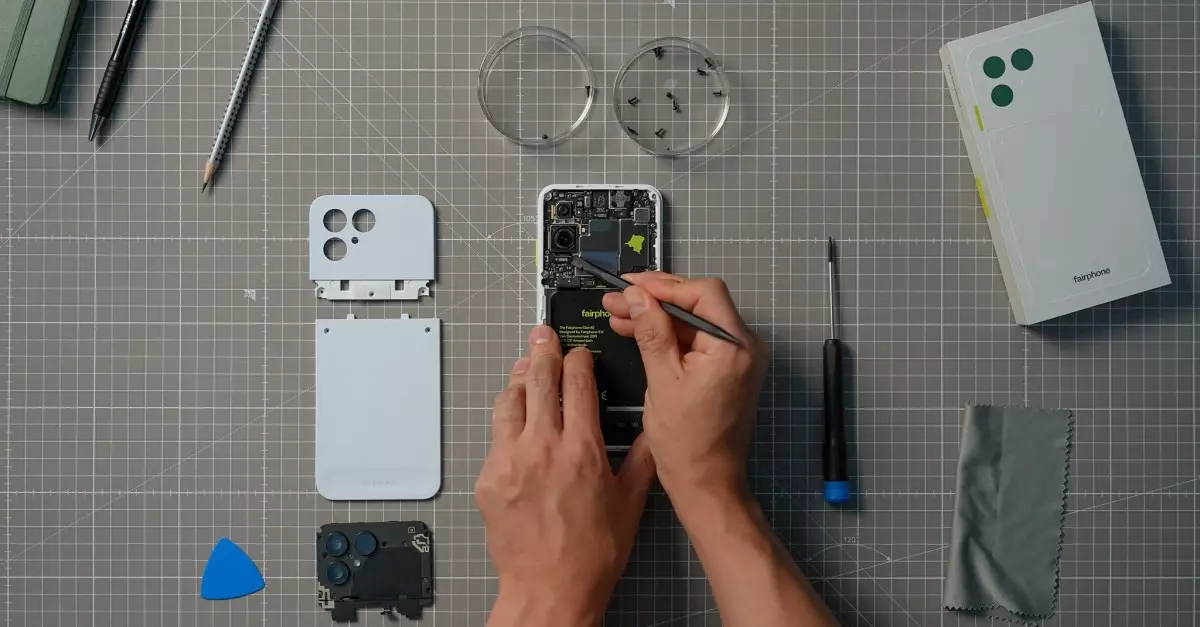In an industry often criticized for its disposable nature, the Fairphone 6 emerges as a shining beacon of sustainability and user-centric design. Unlike typical flagship devices that prioritize aesthetics and slim profiles at the expense of repairability, Fairphone refuses to compromise on the fundamental principle of longevity. This device exemplifies how thoughtful engineering and a commitment to repairability can redefine consumer expectations, setting a powerful precedent for future smartphone development.
The standout feature of the Fairphone 6 is its maintainability. While recent models have maintained a high repairability score—ten out of ten from iFixit—this iteration refines it with a smaller, sleeker form factor without sacrificing modularity. It is remarkable that, despite no longer offering tool-free battery replacements, accessing and swapping out critical components like the battery still requires only a minimal set of tools—namely, a T5 Torx screwdriver and seven screws. This innovative approach underscores a profound understanding: user empowerment goes beyond mere claims; it needs to be accessible and straightforward.
Furthermore, Fairphone’s design philosophy ensures each component is easily replaceable, from the USB-C port to individual camera sensors. This approach significantly reduces electronic waste, empowering consumers to extend their device’s lifespan rather than discard it due to minor issues. The replacement parts are readily available through Fairphone and iFixit, ensuring that users have access to genuine components long after their purchase. The inclusion of swappable backplates and accessories not only enhances customization options but also bolsters the device’s overall sustainability narrative.
Striking a Balance: Performance, Features, and Practicality
While the Fairphone 6 excels in repairability and eco-friendliness, it does come with compromises that reflect a shift in priorities. The device’s specifications are modest compared to flagship competitors, which may affect power users seeking top-tier performance. Its dual rear camera setup remains basic, and the Qualcomm Snapdragon 7S Gen 3 chipset is far from the fastest on the market. The USB port, limited to USB 2.0, might disappoint those who need rapid data transfers, yet the 6.3-inch LTPO OLED display with a refresh rate between 10 and 120Hz is notably impressive, delivering vibrant visuals and smooth interactions.
This deliberate trade-off reveals a strategic choice by Fairphone: prioritize longevity, repairability, and sustainable materials over sheer raw power. It’s a reaffirmation that a device can be functional, stylish, and environmentally responsible simultaneously. As much as it may not compete with ultra-high-performance smartphones in benchmarks, the Fairphone 6’s core value proposition is rooted in its environmental ethos and the realistic needs of everyday users interested in durability and repairability.
Long-term Support and Ethical Manufacturing: Setting a New Standard
Fairphone’s commitment to long-term support is perhaps the most compelling aspect of this device. Guaranteeing seven years of Android OS updates and eight years of security patches underscores a transformative approach in a market where manufacturers often cease support within a few years. The inclusion of a five-year warranty further cements Fairphone’s dedication to sustainability and customer trust.
This strategic focus on support not only extends the lifespan of individual devices but also counters the pervasive throwaway culture. The company’s loyalty program incentivizes users to retain and repair their phones, fostering a community built on responsibility and mindful consumption. Coupled with transparent manufacturing practices and the use of ethically sourced materials, Fairphone’s ethos resonates with a growing demographic eager to align their technological choices with their values.
Despite some limitations—such as an IP55 rating that is respectable but not industry-leading—the overall design demonstrates that durability need not be sacrificed for aesthetic or performance. The modularity, repairability, and long-term software support of the Fairphone 6 challenge the status quo and emphasize that a more sustainable future for smartphones is within reach.
The Fairphone 6 represents a thoughtful evolution in the smartphone industry—one that prioritizes the user’s ability to repair, upgrade, and sustain their device. While it may not cater to every power user’s need for cutting-edge specs, its influence extends far beyond raw performance, offering a compelling blueprint for responsible innovation. It reminds us that technology can be both functional and ethically sound, providing a vision of a more sustainable digital future.


Leave a Reply